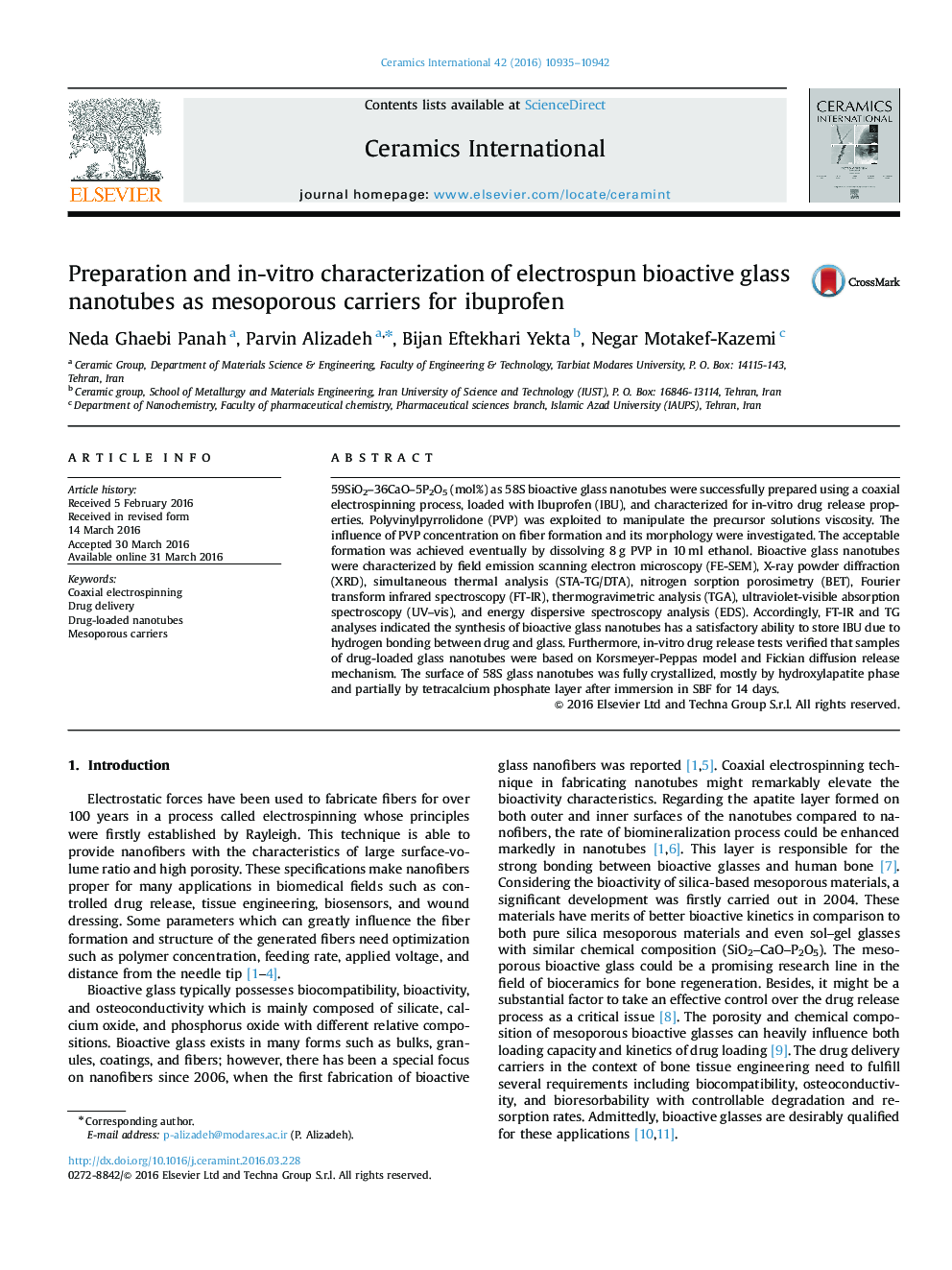| Article ID | Journal | Published Year | Pages | File Type |
|---|---|---|---|---|
| 1458642 | Ceramics International | 2016 | 8 Pages |
59SiO2–36CaO–5P2O5 (mol%) as 58S bioactive glass nanotubes were successfully prepared using a coaxial electrospinning process, loaded with Ibuprofen (IBU), and characterized for in-vitro drug release properties. Polyvinylpyrrolidone (PVP) was exploited to manipulate the precursor solutions viscosity. The influence of PVP concentration on fiber formation and its morphology were investigated. The acceptable formation was achieved eventually by dissolving 8 g PVP in 10 ml ethanol. Bioactive glass nanotubes were characterized by field emission scanning electron microscopy (FE-SEM), X-ray powder diffraction (XRD), simultaneous thermal analysis (STA-TG/DTA), nitrogen sorption porosimetry (BET), Fourier transform infrared spectroscopy (FT-IR), thermogravimetric analysis (TGA), ultraviolet-visible absorption spectroscopy (UV–vis), and energy dispersive spectroscopy analysis (EDS). Accordingly, FT-IR and TG analyses indicated the synthesis of bioactive glass nanotubes has a satisfactory ability to store IBU due to hydrogen bonding between drug and glass. Furthermore, in-vitro drug release tests verified that samples of drug-loaded glass nanotubes were based on Korsmeyer-Peppas model and Fickian diffusion release mechanism. The surface of 58S glass nanotubes was fully crystallized, mostly by hydroxylapatite phase and partially by tetracalcium phosphate layer after immersion in SBF for 14 days.
